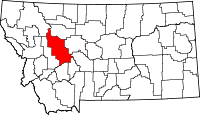History of Lewis and Clark-Helena
Helena, first known as Crabtown, was established by four gold miners from Georgia in 1864. The group coined the area “Last Chance Gulch” and the prospect of instant wealth attracted many settlers to the area in hopes of striking it rich. Mining camps were established and the community was renamed Helena. The area was surveyed by Captain John Wood in 1865 and streets were platted along the paths of the local miners. Helena was selected as the capital of Montana Territory in 1875 and businesses were established to meet the growing needs of the community. By 1883 railroad development sparked growth and Helena was recognized as a transportation hub due to the many rail lines located in the area. Known as “the Queen of the Rockies,” Helena continued to boom. As neighboring Anaconda began to compete with Helena for the State Capital, Helena secured the position due to its central location and was also selected as county seat for Lewis and Clark County. The area boasted enormous wealth from profitable mining and mansions decorated the city.
As mining began to decline, Helena’s economy became based on tourism. The Continental Divide, Missouri River and picturesque scenery now attract many avid recreational enthusiasts. The area also houses the Montana State Capitol, Civic Center, Saint Helena Cathedral and many educational institutions. It has become an area rich in history and natural beauty, attracting a variety of visitors and residents each year.
Today Helena is home to approximately 29,939 residents.






























